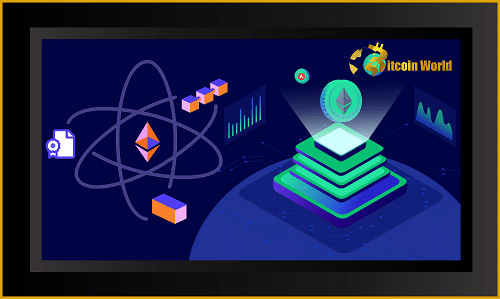Remember the early days of crypto, when the promise of cheap and fast payments was a major draw? That vision might be closer to reality than you think! Speaking at Korea Blockchain Week, Ethereum co-founder Vitalik Buterin made a compelling case for the resurgence of crypto payments, all thanks to the incredible progress in Layer-2 scaling solutions.
The Forgotten Promise of Crypto Payments
Buterin pointed out that the initial dream of cryptocurrency as a seamless and affordable payment system got somewhat sidelined due to rising transaction costs. Think back to the times when sending even a small amount of crypto could cost a hefty fee – definitely not ideal for everyday transactions. As he aptly put it, this vision was “forgotten a little bit” because it simply became too expensive.
But the tide is turning. Enter Layer-2 solutions, the unsung heroes working behind the scenes to make blockchains like Ethereum faster and more efficient. These innovative solutions essentially handle transactions off the main Ethereum chain, bundling them up and then settling them on the main chain. This clever workaround dramatically reduces congestion and, crucially, lowers transaction fees.
How Low Can Transaction Fees Go?
Buterin painted a promising picture of the future, stating that with current Layer-2 roll-ups, transaction fees are already hovering around $0.10 to $0.25. But the real game-changer is on the horizon. With ongoing improvements and optimizations, he predicts that transaction costs could plummet to a mere $0.05, and potentially even as low as $0.02! Imagine sending crypto for just a few cents – that’s the kind of affordability that can truly revolutionize digital payments.
He specifically highlighted Optimism, an Ethereum Layer-2 scaling solution, as an example of the significant progress being made. Their implementation of zero-byte compression is a testament to the innovative approaches being used to shrink transaction data and further drive down costs.
The Journey So Far: From Bitcoin’s Vision to Today’s Reality
It’s interesting to look back at the origins of Bitcoin. Its initial purpose was to be a “peer-to-peer electronic cash system,” offering a cheaper alternative to traditional payment methods. However, as blockchain adoption soared around 2013, transaction costs on the Bitcoin network also increased, hindering its use for small, everyday payments.
Buterin believes that scaling solutions, similar to the Lightning Network for Bitcoin, hold the key to unlocking this original vision. By bringing transaction costs down to fractions of a cent, both Bitcoin and other cryptocurrencies can once again fulfill their potential as practical payment tools.
Paving the Way for Crypto Payments Ahead
So, where will these ultra-low transaction fees take us? Buterin outlined several compelling use cases:
- Empowering Lower-Income Regions: In areas where traditional financial systems are lacking, affordable crypto payments can provide access to crucial payment infrastructure via the internet. This can be particularly impactful for international remittances, where fees can often be exorbitant.
- Beyond Finance: Expanding Crypto’s Utility: Cheap Ethereum transactions will fuel the adoption of crypto in non-financial applications. Think about things like:
- Decentralized Domain Name (DNS) Servers: Making access and management more affordable.
- Human Proof of Attendance Protocols: Streamlining verification processes.
- Web3 Account Management Systems: Simplifying user onboarding and interaction with decentralized applications.
In essence, lower transaction costs unlock a wider range of possibilities for blockchain technology, extending its reach far beyond just financial transactions.
The Future is Affordable: Key Takeaways
Let’s recap the exciting developments discussed by Vitalik Buterin:
| Key Aspect | Details |
|---|---|
| The Problem: | High transaction costs hindered crypto’s use for everyday payments. |
| The Solution: | Layer-2 scaling solutions like roll-ups are dramatically reducing fees. |
| Current Fees: | Ranging from $0.10 to $0.25 on some Layer-2s. |
| Future Potential: | Transaction costs could drop to as low as $0.02 – $0.05. |
| Key Benefits: | Wider adoption in lower-income regions, new use cases beyond finance, increased accessibility. |
| Example: | Optimism’s zero-byte compression is a prime example of innovation in Layer-2 scaling. |
The Road Ahead
While challenges remain in the broader adoption of cryptocurrency, the progress in Layer-2 scaling is a significant leap forward. Buterin’s optimistic outlook suggests that the dream of using crypto for everyday payments is no longer a distant fantasy. As transaction costs continue to fall, we can expect to see a resurgence in crypto payments and the emergence of innovative new applications that leverage the power of affordable blockchain transactions. The future of crypto payments is looking bright, and Ethereum’s Layer-2 solutions are leading the charge.
Disclaimer: The information provided is not trading advice, Bitcoinworld.co.in holds no liability for any investments made based on the information provided on this page. We strongly recommend independent research and/or consultation with a qualified professional before making any investment decisions.


